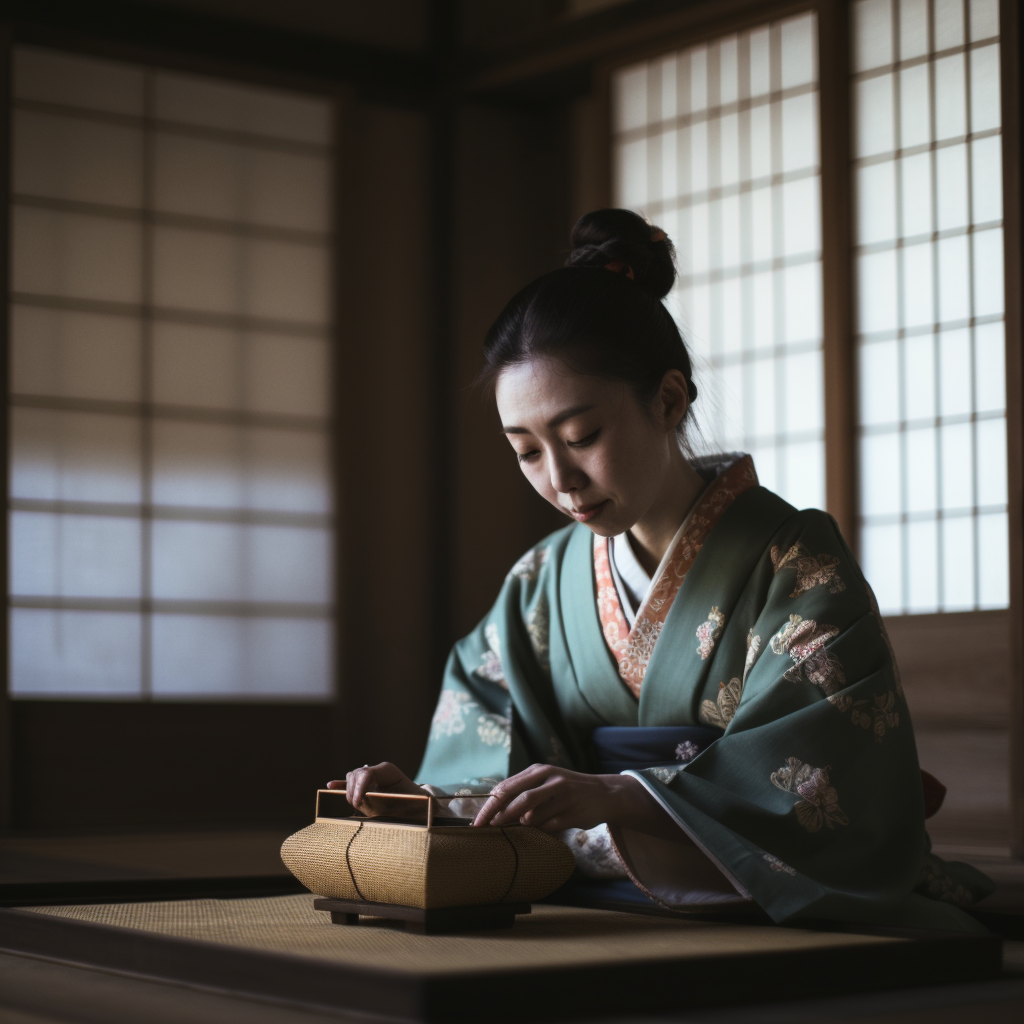The Magic of Japanese Tea Ceremony
Step into the world of the Japanese tea ceremony, and you enter a realm of serenity, respect, and harmony. Known as ‘Chado’ or ‘the way of tea,’ it’s an art form that’s as much about the journey as the destination.
An Ode to the Art of Simplicity
The aesthetic principle at the heart of Chado is “Wabi-Sabi,” a concept embracing the beauty of imperfection and transience. In a tea ceremony, everything from the tea utensils to the ceremony’s rhythm reflects this philosophy. Wabi-Sabi is not just about simplicity; it’s about finding beauty in life’s fleeting, imperfect moments.
Tea Rooms: A Microcosm of the Universe
A tea room, or ‘Chashitsu,’ is a sanctuary where the ceremony takes place. Its minimalistic design, often with elements of nature, mirrors Wabi-Sabi aesthetics. Upon entering, you leave the chaotic outside world behind, embracing a space of tranquility and mindfulness.
The Ritual: Harmony, Respect, Purity, and Tranquility
Each tea ceremony follows the principles of ‘Wa Kei Sei Jaku,’ meaning Harmony, Respect, Purity, and Tranquility. These principles guide every movement, creating a dance that transcends the mere act of drinking tea into a spiritual experience.
The Global Influence of Chado
Chado’s influence extends beyond Japan’s borders. It has inspired artists, philosophers, and even business practices worldwide. The idea of mindfulness, respect, and harmony with nature, fundamental to Chado, is increasingly recognized and applied globally.
In Arts and Design
The Wabi-Sabi aesthetics has significantly influenced Western design, promoting minimalism and organic imperfections. It’s also visible in the art world where artists adopt these principles, reflecting them in their work.
Influence in Business and Leadership
Interestingly, Chado principles have found their way into business and leadership practices. Concepts like respect for others, harmony in teamwork, and mindfulness in actions are becoming essential leadership qualities.
Chado and Mindfulness
The act of making and drinking tea in Chado is a form of mindfulness practice, helping individuals stay present and focused. This aspect of Chado resonates globally, with mindfulness becoming an integral part of many people’s lives.
In Conclusion
The Japanese tea ceremony’s aesthetics and philosophies provide a beautiful perspective on life. Its principles are not confined to tea rooms but have found relevance in art, design, business, and personal growth globally. The way of tea is a beautiful journey into understanding our existence, making everyday life a little bit more extraordinary.

コメントを残す